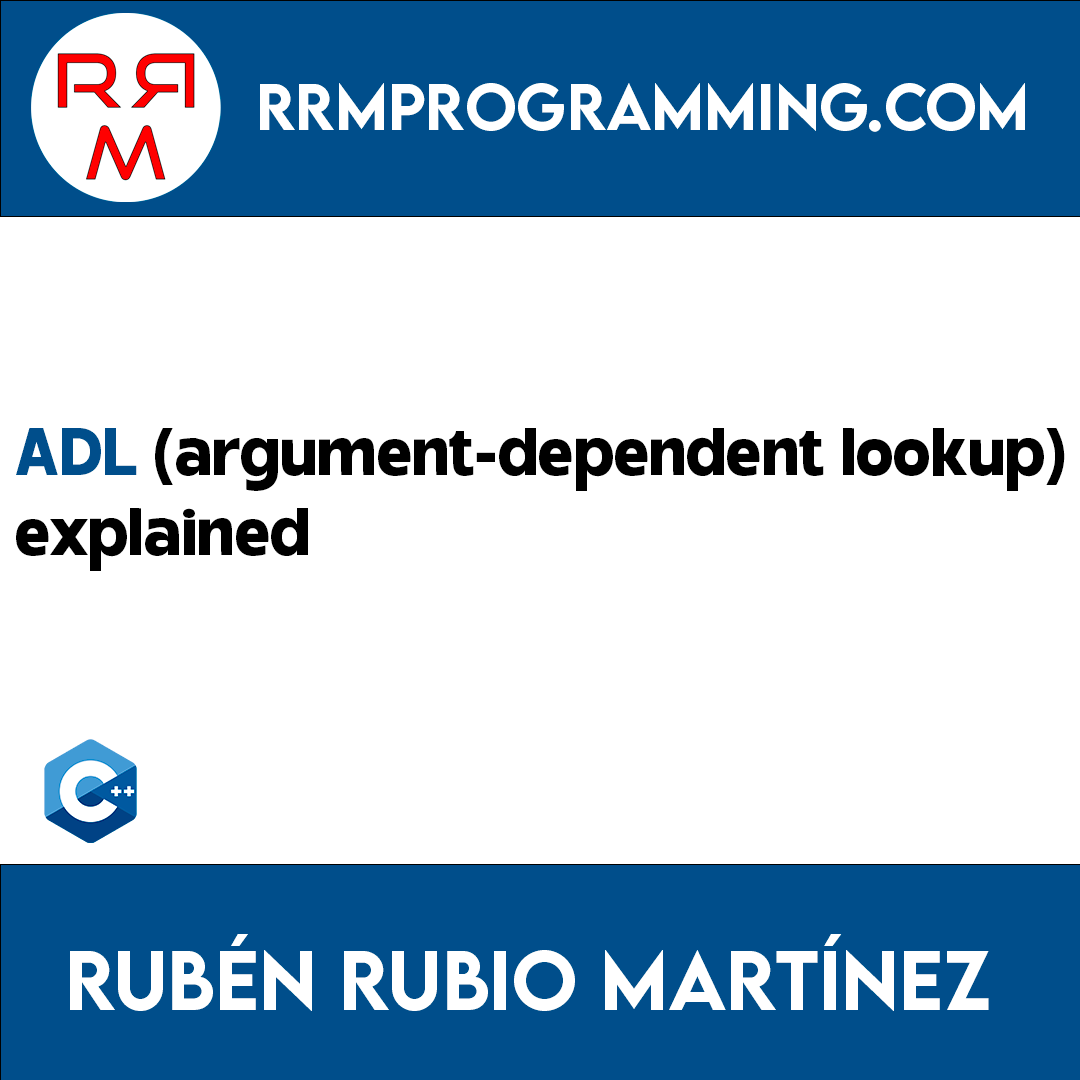ADL also known as argument-dependent lookup or Koenig lookup (even thought he said that he have not discovered it), is a very old and unfamiliar C++ feature.
ADL work is to set a couple of rules to lookup for functions based on their namespaces parameters provided, e.g:
int main() {
std::vector<int> v;
auto it = std::begin(v); // Common std::begin function.
auto itAdl = begin(v); // Also calling std::begin because 'v' is in the std namespace.
}This is a common piece of code in C++ that everyone has written without knowing why exactly works. In this case both ways are equivalent because they are calling std::begin. The first one is called directly and the second one is found thanks to ADL set of rules.
This is very powerfull specially when working with operators like the example below:
int main() {
const std::string& out = std::string("Hello") + "world";
std::cout << out;
}There is neither a + or << global operator but thanks to ADL it is smart enought to look for them in their relative namespaces. Let’s take a look what are the real code generated by the compiler using https://cppinsights.io/
int main() {
const std::basic_string<char, std::char_traits<char>, std::allocator<char> > & out = std::operator+(std::basic_string<char, std::char_traits<char>, std::allocator<char> >(std::basic_string<char, std::char_traits<char>, std::allocator<char> >("Hello", std::allocator<char>())), "world");
std::operator<<(std::cout, out);
}
Both operators have been converted to std::operator calls.
Another very cool feature is to prioritize our own function calls when overriding some std implementations:
template<typename T>
int accumulate(T begin, T end, int sum) {
return 42;
}
int main() {
std::vector<int> values{10,30,10};
int sum{0};
accumulate(values.begin(), values.end(), sum); // Returns 42.
}In this case if our own accumulate implementation have not been provided, std::accumulate would be called instead.
Obviously we can take advantage of this an use it in our own code. Even thougt I personally think it is a better practice to always specify the namespace on our functions and objects, it could be a very powerfull solution if at some time we want to change a large piece of code just by swapping namespaces.
namespace ns1 {
struct X{};
void g(const X x) {}
void f(const X x) {}
}
namespace ns2 {
struct X{};
void g(const X x) {}
void f(const X x) {}
}
int main() {
ns1::X x;
g(x); // ns1::g(ns1::X) is called.
f(x); // ns1::f(ns1::X) is called.
}In this particular example if we change the namespace in the object declaration, all the function calls would also change.
References
- https://en.cppreference.com/w/cpp/language/adl
- https://www.drdobbs.com/cpp/a-personal-note-about-argument-dependent/232901443
- https://www.youtube.com/watch?v=agS-h_eaLj8&ab_channel=C%E1%90%A9%E1%90%A9WeeklyWithJasonTurner
- https://stackoverflow.com/questions/8111677/what-is-argument-dependent-lookup-aka-adl-or-koenig-lookup





